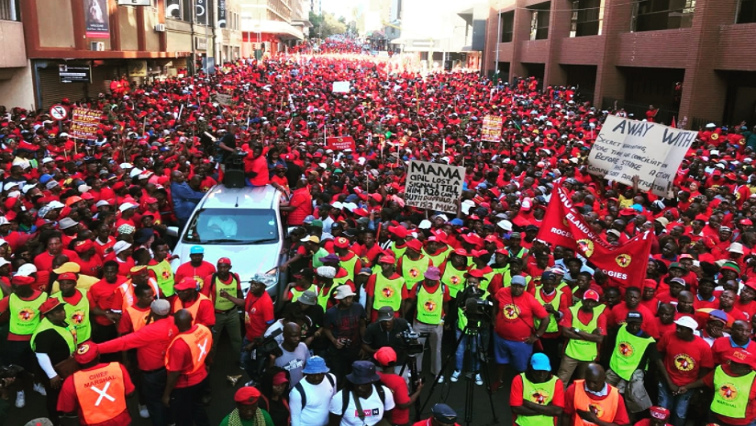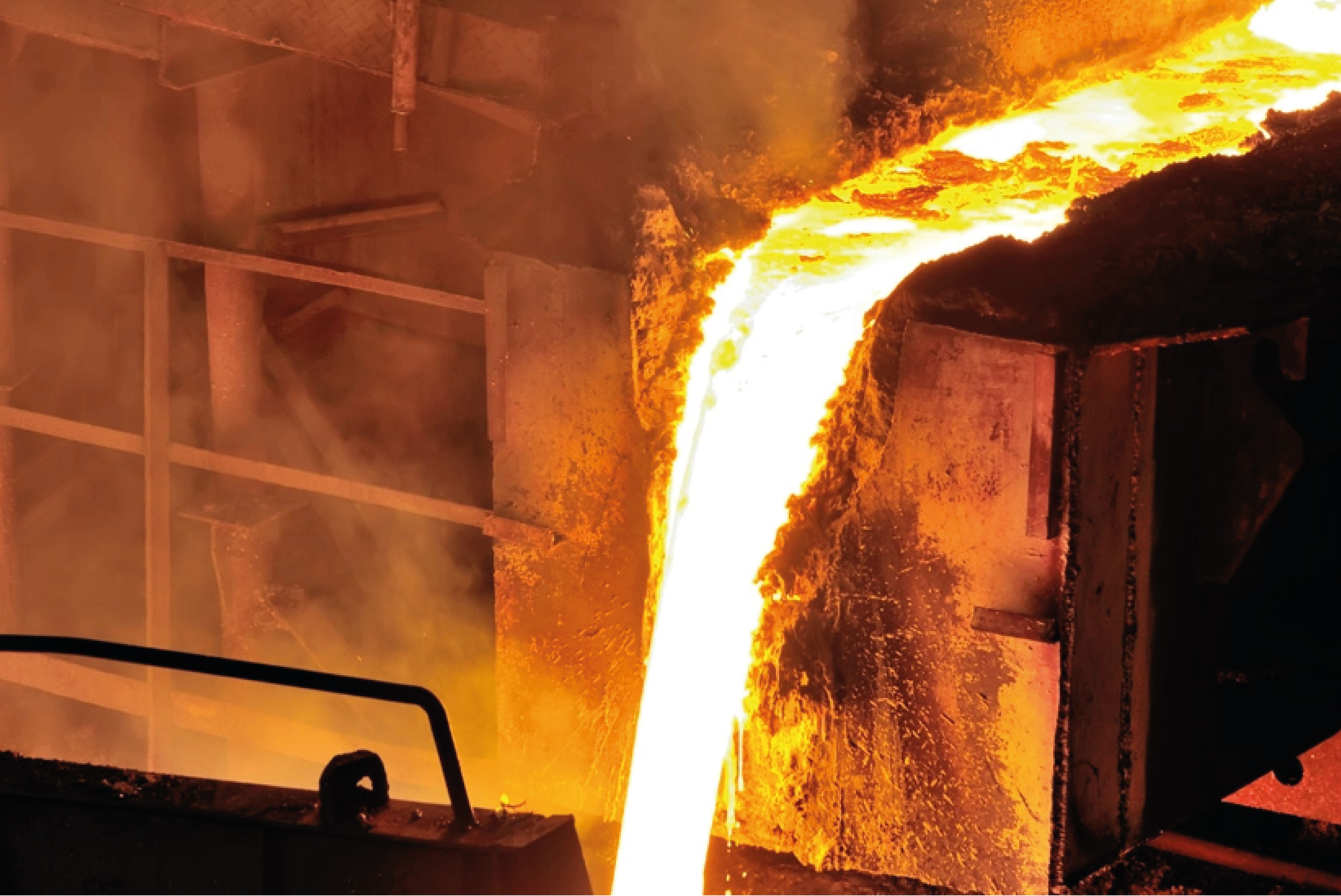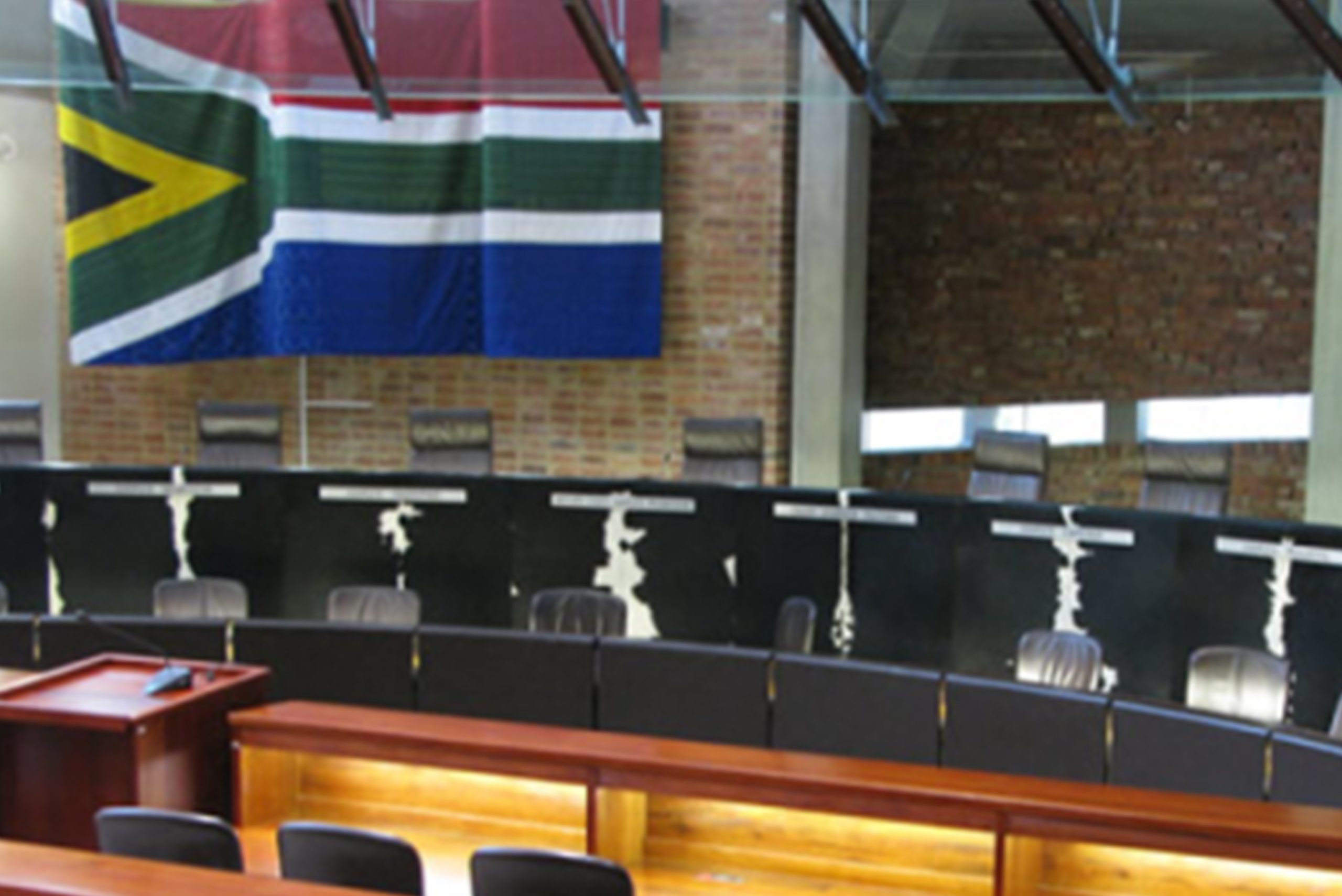Fixing industry: NEASA, get off the rooftops and into the ring
When the President made the call to business to ‘’get off the rooftops’’ and ‘’into the ring’’ to play its part in addressing crippling issues related to energy, logistics and crime to name a few – SEIFSA headed the call and continues to bring its capacity and resources to bear in addressing these and many other crises.
SEIFSA has consistently indicated its readiness to work with all stakeholders including government to shift the needle in putting our country onto a sustainable and inclusive growth path. We will, on the basis of such indications, continue to work with all stakeholders and not shy away from holding stakeholders to account as we act with urgency to rebuild trust amongst all social partners.
Conspicuously absent in all these engagements, apart from the periodic Newsletter, has been the voice of NEASA. In its own eyes, NEASA has a special understanding of the dynamics of the metals and engineering industries. Its boring refrain is both simple and simplistic: “All our economic pain comes from SEIFSA.’’ There is little wonder, then, that when one objectively surveys more than twenty years of NEASA’s participation on the Metals and Engineering Industries Bargaining Council, the only unbroken thread that can be discerned from its participation is its extraordinary and spectacular record of not having achieved a single thing for its constituency.
Times are tough in the country now, so many of the problems closing businesses and killing jobs could have been avoided. In these times, what can those of us mandated to act for business do? We are entitled and have every right to be angry and we should express it, but in ways that provides energy for action rather than draining us. Constructive criticism, engagement and action can make a difference, especially if we express our message in a way that models what we want to see.
It's easy to criticize, to engage in penny-pinching and throw barbs, but doing so without advancing any reasonable and constructive alternative is intellectually bankrupt. NEASA’s biggest failing is that it knows roughly what it is against, but has no credible positive programme to define and realize concrete policy objectives.
If only our problems were limited to hours of work and wages, how simple the road ahead would be in resolving these. At an aggregated level, compensation of employees makes up 20% of the total input costs to the metals and engineering sector. Should our focus and collaborative creative thinking not rather be on the 80% of the equation. The trouble is that even on these issues, NEASA has no real idea what to do to remedy them. It attacks all and sundry, but has no plan to get these issues addressed.
The future for this industry will be created by those who have the courage to take action.
NEASA quite simply doesn’t have what it takes to confront the challenges facing industry. NEASA is characterized by crass opportunism, hypocrisy and an authoritarian populism offering nothing to its followers.
NEASA may well have made gains in membership in recent years. This is good for our industry. Of course, the emergence of a credible alternative model addressing the plight of SMME’s would be even better. But since 2010, NEASA has centered its strategies on opposition to SEIFSA. But now that the Main Agreement has been gazetted and extended, NEASA suddenly look very shaky. The focus on SEIFSA leaves NEASA struggling for relevance in a post gazettal era. NEASA’s most recent Newsletter has the ring of desperation.
NEASA will have to develop a credible vision of the future that talks to the real challenges facing its membership on its own or in alliance with employer bodies across the spectrum and here’s the rub - in partnership with all stakeholders that NEASA over the years has been quick to point the finger of blame.
Deals or Agreements are not perfect, they are the product of negotiations and compromise. Reaching agreement with the other side whether in the commercial or industrial relations sphere is tough, walking away is easy. Continuing the engagement process when all else seems lost requires commitment, dedication and innovative and creative thinking.
SEIFSA representing 18 Employer Associations, with an 80-year track record of delivering industry solutions, employing close to 150 000 employees, is ready to work in partnership with all industry stakeholders, who understand, that deals are struck when adversaries arrive at the stark reality that time would be better spent on focusing on what they have in common instead of the issues that divide them.
Lucio Trentini
Chief Executive Officer
SAFTU’S Intended protest action 20 March 2023
Introduction
Management may be aware, from recent media reports, that the South African Federation of Trade Unions (SAFTU), of which NUMSA is a member, intends joining the Economic Freedom Fighters’ (EFF) call for a national shutdown on 20 March 2023.
Protest Action and the Labour Relations Act
The Labour Relations Act (LRA) permits registered trade unions or federations such as SAFTU, to undertake protected protest action to promote the social and economic interests of workers provided that they observe the procedural requirements contained in Section 77 (1) (b) of the LRA 66 of 1995, as amended.
This application was duly considered by NEDLAC and the NEDLAC Section 77 Standing Committee has determined the notice to be compliant with the administrative requirements of the LRA. SAFTU can therefore go on protest action based on their 1(b)-notice submitted in 2020, and their latest 1(d) notice. Procedurally, they have met the requirements.
Consequently, any employees participating in any action on 20th March will be protected by the normal rules regarding protected strike-action, namely: no-work-no-pay and no disciplinary action.
Management Guidelines on Possible Absenteeism on Monday, 20 March 2023
SEIFSA recommends that management adopt the following course of action in dealing with any stay-away from work on the 20th March:
- Inform all workers that any absences related to the protest action will be treated on the following basis:
- no work, no pay; no disciplinary action;
- a shift for leave-pay and leave-enhancement pay qualification purposes will be lost in respect of the day’s absence;
- any overtime worked during the course of the week will be paid at ordinary rates to make up for the lost ordinary working hours from Monday, 20th March February 2023; and
- Management is at liberty to explore the possibility of arranging mutually acceptable alternative work-in-time arrangements in view of the Monday being sandwiched between a week-end and a public holiday on the 21 March 2023.
The Staff of the SEIFSA Industrial Relations Division are available on (011) 298-9400 to provide any further advice and/ or assistance to management on the contents of this management brief.
BUSA on President Cyril Ramaphosa cabinet reshuffle
We note the announcement by President Ramaphosa of his reshuffled cabinet. The appointment of Dr Kgosientsho Ramokgopa as Minister of Electricity is a critical one and we will engage him urgently to see what his thinking is on dealing with the short-term loadshedding crisis and the medium-term energy crisis. We were of the view a new Minister of Electricity should not be appointed, but now that the President has appointed him, we will continue our support to help implement the President’s Energy Plan as a matter of urgency. He will have a significant challenge in coordinating roles between his department and that of the Minister of Resources and Energy and how he utilises the powers accorded to him under the State of Disaster.
Numerous new ministers are new people and we will wait to see what announcements they make about their plans and strategies and we will expect significant improvement in policy formulation and, particularly in implementation. We also expect to see a Cabinet that is aligned behind the President’s vision and one that speaks with a single voice.
The Cabinet will have to demonstrate, with urgency, that ministers will be moving with speed to address the numerous crises we are experiencing in our country. The ministers do not have the luxury of taking their time in getting into their roles, but must move with urgency and implement, implement, implement!
Business has consistently indicated its readiness to work with government to shift the needle significantly in attracting investment and putting our country onto a sustainable and inclusive growth path. We remain committed to pursue this and urge relevant ministers to collaborate with us in a real partnership.
We will look out with great interest for urgent indications from the Cabinet about its priorities in the next few weeks. We will, on the basis of such indications, engage and see if there are possibilities of working together. But we will also continue to hold Cabinet, and the President, to account to show decisive leadership and act with urgency to rebuild trust of government amongst South Africans and to instil confidence amongst investors.
ENDS
Cas Coovadia
Business Unity SA CEO
SEIFSA and MSHEQ join forces to promote safety in Metal & Engineering Sector
The Steel and Engineering Industries Federation of Southern Africa (SEIFSA) and MSHEQ Health and Safety Consultants and are joining forces to promote safety training in the Metals & Engineering (M&E) Sector.
“This is the first time we have set up this type of partnership. It makes sense to do it with SEIFSA as they represent a significant number of employers in the steel and engineering industry, a huge but dangerous industry. We are excited to see where this journey takes us,” says Charné Vosloo, the founder and managing director of MSHEQ Health and Safety Consultants.
Vosloo refers to the partnership as a symbiotic relationship and says she looks forward to a long-term training partnership.
“SEIFSA is happy to partner with MSHEQ in this initiative as we know how crucial workplace safety is, especially in our sector, and the best way to ensure the safety of workers is through high quality training,” says Lucio Trentini, the CEO of SEIFSA.
The Employment and Labour Deputy Minister is also committed to keeping workers safe. Boitumelo Moloi spoke about the importance of workplace safety at a recent Occupational Health and Safety (OHS) conference in Cape town, urging companies to develop a mandatory culture of health & safety compliance. “We should not allow compliance to happen by accident. If you think compliance is exorbitant, try noncompliance,” he warned.
Vosloo is in complete agreement: “We genuinely want employees to work safely so they can go home to their families, and just as importantly, we want employers to be committed to providing a risk free and safe working environment. Our philosophy is ‘if we don't train them, we can’t blame them’. All workers have the right to refuse to work in an unsafe workplace, but how do they know if they have not been trained?”
MSHEQ offers 21 accredited courses in various subjects, including first aid, firefighting and risk assessment, that run for one- or two-days sessions with the aim of preventing accidents and/or injuries in the workplace. Some courses are aimed specifically at managers while others cater for the needs of high-risk workers.
Vosloo says her all-female team as well as MSHEQ's 13 years of health & safety experience offer a new perspective in the male-dominated steel and engineering industry.
“SEIFSA is excited to join MSHEQ in this partnership and to shine a light on the importance of training both workers and managers to improving the safety record of companies in the Metals & Engineering Sector,” says SEIFSA CEO Lucio Trentini.
Lucio Trentini
Chief Executive Officer
SEIFSA welcomes the 2023 national budget
The 2023 National Budget recognises, reflects and has been structured to respond to key headwinds facing the global and South African economy.
The budget has maintained fiscal prudency – achieving a primary surplus - in an uncertain macroeconomic environment, without resorting to unsustainable borrowing and punitive tax proposals.
These headwinds include slower global economic growth, presenting a less supportive environment for the South African economy, thereby limiting the revenue side of the equation. Additionally, higher interest rates, globally, which increase debt service costs, estimated to be R340.5 billion (just under R1 billion per day) in the 2022/3 fiscal year, at a time when the State will be taking on R254 billion of Eskom’s debt also contributes to a difficult budgeting environment.
The recognition of the binding constraint that the energy crisis presents to the South African economy and the proposals set-out in the budget to deal with this risk are welcomed.
SEIFSA has consistently highlighted that while it is important to stabilise Eskom, and the debt relief package does that, the broader solution lies in allowing an accelerated deployment of generation capacity by businesses and households.
To this end, the tax measures allowing companies to recoup 125% of the capital cost of renewable energy investment, without limitation to the size of capacity installed, and the 25% rebate afforded to households for solar installation are welcomed.
However, while National Treasury’s intention to induce this investment in the short-run by caping the window of these incentives to two and one year for companies and households, respectively is noted, SEIFSA submits that longer timeframes should be considered, given the extent of the energy crisis.
At a bare minimum the period should be the medium-term expenditure framework (next three fiscal years) or five years. Moreover, the precarious state of the economy at the current state and into the next fiscal year for companies and households, means that these economic agents have limited financial resources to make the energy investments. The risk of the very short timelines considered for these tax measures will lead to the measures only being taken up by companies that have the financial resources at the present moment, thereby limiting the full potential of the measure. The same observation regrettably applies to private households.
The budget estimates that R903 billion will be spent on infrastructure over the medium-term expenditure framework, which is a key point to highlight for the metals and engineering sector, a sector whose performance is driven by infrastructure spend. However, we note with concern the envisaged finalisation of the Public Procurement Bill, which National Treasury anticipates only to table through the parliamentary process in March 2023.
In the continued absence of finalising this bill, there is considerable uncertainty around procurement by state organs, and particularly around aspects of preference for local companies.
SEIFSA continues to call for an urgent and accelerated finalisation of the Public Procurement Bill to limit the opportunity being lost to domestic industrialisation.
SEIFSA Releases State of the Metals and Engineering Sector Report
The outlook for the Metals & Engineering (M&E) Sector this year is decidedly bleak, according to the State of the Metals and Engineering Sector Report, which the Steel and Engineering Industries Federation of Southern Africa (SEIFSA) released this week.
The report, which was presented in a webinar on February 16, explores the current state of the Metals & Engineering (M&E) Sector, the structural dynamics underpinning the sector and the global and domestic economic indicators that influence the sectors outlook for 2023.
SEIFSA Chief Operating Officer Tafadzwa Chibanguza, describes the current global environment as extremely challenging. Inflation emanated as one of the most significant global headwinds in 2022, with the conflict in Ukraine and China’s slowdown – from the perspective of the country being the world’s factory – feeding inflationary pressures. Central banks around the world have had to adopt a much more aggressive stance to fight the stubbornly high inflation, and the implications of the monetary policy are starting to bite and will shape the economic fortunes for the year. A global economic slowdown is expected, tighter financing conditions have exposed fiscally vulnerable emerging markets, all of which represent markets for the M&E Sector which exports 38.2% of output, with half of the exports going into Africa. Local headwinds, primarily the energy crisis, only serve to compound the already inhospitable environment. The sectors to which the M&E Sector supplies domestically, namely: construction, automotive, mining and petrochemicals, have all indicated a difficult year ahead, with the energy crisis being a chief contributor.
"Based on these multiple challenges, SEIFSA expects production for the M&E Sector as a whole to contract by 2.2 % in 2023," says Chibanguza. The best-case scenario estimates a contraction of 1.5% for the sector.
To place this figure in context, production for the sector increased by 1.6% in 2022, although the sectors gross domestic product (GDP) contracted by 6.5% in the same year.
The report also highlights the key reform programmes and policies needed to drive the sector’s performance, which is closely tied to economic activity and underpinned by prevailing economic fundamentals.
"There is not much we can do with external factors — we are either a victim or beneficiary of these, such as the conflict in Ukraine. But domestically there is a lot more we can and should be doing, especially when it comes to the energy crisis, which is a risk to the whole economy," says Chibanguza.
The energy crisis has far-reaching implications from water provision, risks to general service delivery at municipal level, which has been accompanied by increasing instances of protest action. Resolving this one area ticks many boxes, while simultaneously contributing in part to unlocking the economy’s underling potential.
The report provides an in-depth analysis of the effect of the toxic combination of load-shedding, dismal service delivery and a depressed global economic environment and the implications on an already-beleaguered M&E Sector.
View the PowerPoint presentation here: https://bit.ly/3I5bsFN
Watch the webinar recording here: https://bit.ly/3YRWjyf
BUSA Reaction to State of the Nation Address (SONA)
This SONA was delivered amid severe crises across critical economic and social spheres in our country. These include the energy crisis, the logistics crisis, the law-and-order crisis, the water crisis, and the governance crisis. We welcome the President’s acknowledgement of these crises facing our country and for outlining measures to address them. The speech outlined some good ideas, as well as bad ones.
It is of concern to business that the President referred to our nation as being defined by hope and resilience. He also said “better late than never” in the context of delays in implementing numerous commitments. Our nation should not have to depend on hope and, in the crises, we face, we cannot afford to be late in implementation.
The President rightly referred to the devastating impact of Covid 19, on livelihoods, the economy and loss of life. What is different however, is that the crises we face today are primarily because of poor governance and lack of decisive leadership, exacerbated by a weak state that is hesitant to work in a real partnership with business, despite several offers by business to support, and work with, government. The speech provided no detail of how government plans to work with stakeholders such as business and we expect that the details will be provided in his response to the SONA debate next week.
We recognise the positive changes since the SONA in 2022. These include the launch of spectrum, lifting the ceiling on embedded energy, going to market on a further tranche of renewable energy and the announcement of a comprehensive energy plan by the President. However, this is where the “better late than never” issue is problematic. All these positive developments should have been announced 4 years ago and implemented then, something business has consistently been calling for. If the embedded energy ceiling had been lifted 4 years ago, when business called for it, the energy environment would be looking very different today. Despite these delays, business responded positively and urgently and 3.6GW of energy will be on the grid in the next two years from investments in embedded energy.
We welcome the concentration in this SONA on the energy crisis, however we are not convinced that declaring a State of Disaster will help address the crisis. It must be seen as a low point in the life of our society that mismanagement and lack of governance has created circumstances in which a State of Disaster has to be declared. We believe the appointment of a Minister for Electricity in the office of the President is a bad idea that will add to the confusion and turf wars rather than solve the problem. It is yet another example of failure to take bold decisions and opting instead for the soft but expensive option of adding another ministry rather than holding those ministers responsible for the crisis accountable.
Business is concerned about the potential of a repeat of corruption we saw under the Covid-19 State of Disaster, although we welcome the announcement that the Auditor-General will oversee use of resources. We welcome the announcement on rooftop solar panels and that provision will be made in the budget speech to incentivise this. We also welcome the President referring to economic opportunities in an effective just transition pathway. One of the positive ideas from the President is the indication that he will establish a structure for social partners to engage on the energy crisis.
Our view is that unemployment can only be addressed sustainably through attracting investment and putting our country onto a sustainable and inclusive growth path. This requires fundamental reforms in the economy and business has done a lot of work on this, which we are still keen on working with government on.
We urge government to demonstrate its commitment to working with other stakeholders in society such business. Implementation through bilateral initiatives will help develop a workable social compact that is anchored on practical implementation rather than mere words on paper.
We welcome the awarding of road construction contracts by SANRAL but urge that this process stays the course and there is certainty in contracting over the full period of the projects. The allocation of 600 million to Infrastructure SA for project preparation is welcome, however, we urge that focus should be on 4 or 5 major infrastructure projects that will contribute to economic growth to market rather than many small projects.
We also welcome progress on bringing corruptors to trial and the return of over R 7 billion to the state. There is a concern that so far, the ringleader involved in corruption have not been brought to book.
We are encouraged that the most vulnerable sectors of society will receive protection through the social wage in the budget and welcome the retention of the Social Relief of Distress Grant.
In conclusion, the SONA in our opinion, does not instil confidence that the structure of government is operating efficiently, and lack of performance and delivery will be held to account. We will follow progress on the announcements made, but emphasise that the critical focus must be on an enabling environment for investment and growth creation. Everything must be measured against that. We also await the restructuring of government to see if the President appoints a capable and lean cabinet that is fully aligned behind his vision and ministers are held accountable if they are not aligned. Finally, the priority areas remain energy, law and order, logistics and water. Business continues to urge government to work with us to implement quick solutions to these crises.
ENDS
Cas Coovadia
Business Unity SA CEO
Main Agreement to be tested in the Constitutional Court
The metal industry main agreement will go down in history as having created a number of firsts. The first time in thirty years increases are awarded on rands and cents (as opposed to on actuals), the first time in over ten years the main agreement has been gazetted and extended to all employers and employees in the industry and the first time, the main agreement has stood up to legal scrutiny. Not once, not twice but three times. First, NEASA’s application to the Labour Court was struck down with costs; second, NEASA’s leave to appeal suffered the same fate and was struck down with cost and thirdly, the Labour Appeal Court arrived at the same conclusion, albeit without costs.
NEASA has now taken a decision to petition the Constitutional Court for leave to appeal the Labour Appeal Court judgment and in so doing, NEASA has not minced its words, boldly stating “this fight is far from over and employers should not lose hope. All avenues have not yet been exhausted.” Indeed, NEASA has not exhausted all legal avenues in desperately seeking redress they firmly but mistakenly, believe is theirs.
One wonders if this is intentional or just coincidental, but it’s beginning to look very much like a “stalingrad strategy” deployed to delay or even avoid any possibility of finding common cause with the exhaustive list of respondents cited in NEASA’s papers. Section 34 of the South African Constitution guarantees everyone’s right to have any matter that can be resolved by the application of law decided before the courts and given that our courts have shown themselves reluctant to nip such repeated access to the Courts – the question becomes: Given who we are, who we represent (by far the greater majority of employers and employees in the sector are represented by SEIFSA affiliated member companies), what we do and the current state of our beleaguered sector – is this negative and obstructive process the best way for collective bargaining partners or adversaries to settle their differences? I think not.
The strategic logic for developing a better collective bargaining framework, should have as its starting point the ideals that are aligned to a commitment to decent and equitable labour practices and a fair economy that levels the playing field for all. Of course, these ideals require compromise and dealmaking, hardly evident in courts of law.
As matters currently stand, where an agreement is negotiated and concluded by bargaining agents who represent and employ the majority of employees falling within the council’s coverage, the extension of a bargaining council agreement is seen as a reasonable and necessary mechanism of sectoral collective bargaining. This is the legislative model which the social partners agreed on in 1995 and which Parliament duly enacted.
Section 32 of the Labour Relations Act expressly empowers – indeed, requires – Bargaining Councils and the Minister of Employment and Labour to follow a specific procedure for extending bargaining council agreements. This procedure was agreed upon in 1995 by the parties to NEDLAC, including the representatives of business. Twenty-eight years on, the system stands accused as being unfair. In reality, arguments supportive of this view are, at best, inconclusive or, at worst, speculative.
Preventing and/or delaying extension may well delay the implementation of the main agreement for non-parties, but the indirect effects are no less important. For the affected workers and their unemployed family members, this would almost certainly translate into greater distress. It is hard to reconcile this with the goal of social justice.
As we begin applying our minds to the tactics and strategy employers aligned to SEIFSA will be deploying in the next round of industry wage negotiations in 2024, we are cognisant that as a sector, we are still and, in all likelihood, will still be, in the midst of a number of crises, ranging from the lingering effects of the Covid-19 global pandemic to various economic (energy, logistics, supply chain, inflation, interest rates etc.) and political uncertainties. We will also be reminded that we will not be negotiating in a vacuum. The last thing industry needs is the prospect of another full-blown strike.
The current main agreement is undoubtedly a paradigm shift and illustrates how like-minded negotiating partners can work together in pursuit of a greater good. Compromise was clearly evident on both sides of the table; trust was deepened and relationships were forged. In the course of negotiations participants came to the conclusion that change was necessary, that we needed to move out of our respective comfort zones and conclude an agreement that not only addressed the concerns of all participating constituencies but more importantly laid the foundation for what to expect in 2024 – stability, industrial peace and certainty.
NEASA, should they win in the Constitutional Court will leave the industry in a perilous situation. The unions will retreat to their comfort zones, SEIFSA will in all likelihood find itself again as the main protagonist, representing the largest chunk of employers and employees in the sector and when negotiations unravel, all will bear the consequences and endure the destruction of value across all organizations irrespective of affiliation.
Courts settings are adversarial in nature, hardly conducive to building relationships. Don’t get me wrong, Courts have a critically important role to play and if it wasn’t for our robust judicial system who knows where South Africa would be today, but in the collective bargaining space, good agreements are founded on sound relationships and not selfish, self-serving power-driven dynamics.
SEIFSA representing the 18 independent Employer Organizations, the Plastic Convertors Association of SA, the Consolidated Employers Organization and the five biggest trade unions in the industry will collectively be serving opposing papers to NEASA’s petition for leave to appeal.
One hopes that for the greater good of the sector and in defense of a fair, just and equitable dispensation the result is favorable – if not, we may all stand to lose far more than we bargained for.
Lucio Trentini
Chief Executive Officer
Another Tough Year Ahead
With the festive celebrations now behind us and having ushered in a new year, all indicators point to 2023 being tougher than the year we leave behind.
For the most part 2022 was characterised by global and domestic turmoil, imported inflation, record levels of load-sheading and political uncertainty.
We come into 2023 knowing that things won’t be easy, the challenges facing us are many. South Africa’s economic outlook doesn’t look good and there is little investor confidence. The notion of job creation, on the back of an alarming high unemployment rate, has become elusive.
The persistent load-shedding, the worst in more than 10 years, has almost erased all the sector's post-Covid-19 gains and the energy crisis shows no signs of ending.
The year is already shaping up to be another busy and challenging one. In February SEIFSA will release the State of the Metals and Engineering Sector Report 2023, which will provide a full picture of what lies ahead for the sector, with inflation continuing to put pressure on the global economy and load-shedding remaining the biggest local headwind.
One of the key issues facing the Metal and Engineering (M&E) sector is the continued lack of public infrastructure spending. Local suppliers urgently need to be given preference when it comes to government projects if the sector stands any chance of lifting itself out of the doldrums.
All signs indicate that the tough global conditions of 2022 are likely to persist in 2023, with a hawkish US Federal Reserve setting the tone for other central banks on monetary policy. The focus on containing inflation tends to lead to a slowdown of activity, which has a significant effect on demand and investment in the M&E sector, along with the sectors it supplies, including mining, automotive and construction.
The other big global issues for 2023 is the continued conflict in the Ukraine. The conflict is raging on – nearing a full year since Russia's invasion on February 2022 – disrupting global supply chains, contributing to the global economy slowing down further as the conflict continues to spur inflationary pressures, sapping confidence and increasing risks worldwide.
Meanwhile, China is battling both high Covid-19 infection rates and the fallout from shutting down its economy in 2022 as part of its zero-Covid-19 policy - it will take time for it to recover from both of these crises.
Locally, the government's multiple service delivery failures are likely to continue to plague communities and the sector this year, with energy, logistics, roads, rail and water - staples of any manufacturing sector – stoking an already high unemployment rate and pilling extra pressure on the government as the cost-of-living crisis intensifies.
SEIFSA will continue to press the point that private-public partnerships are the best option of resolving these issues, with the private sector offering both skills and financial resources. Moreover, in a less supportive global economic environment, domestic economic policy must do a heavier lifting. A clear and well-thought through industrial policy plan is an absolute must if the sector is going to grow. The SEIFSA office will continue to play an active role in contributing to the shaping this agenda.
As we look forward to another challenging year, SEIFSA stands ready to be at your service and support you in every way we can in 2023.
We wish you a safe and productive 2023.
Lucio Trentini
Chief Executive Officer
The main agreement and productivity
Many would argue that productivity and referencing the Main Agreement hardly belong in the same sentence. Productivity in the context of centralized collective bargaining has been an extremely difficult nut to crack. Centralized collective bargaining by its very nature makes it near impossible to reward stellar performers. Year-in and year-out increases are negotiated and awarded on an across-the-board basis effectively rewarding workers for attendance.
The concept of productivity is simple: it measures the rate of output per unit of input employed. More productive processes yield more output at the same level of input. Whether productivity is viewed from an economic, company or country standpoint, being able to measure and track productivity is undeniably crucial to long-term success.
Notwithstanding the difficulties encountered at national level in attempting to onboard productivity into the Main Agreement, many companies have invested heavily in interventions aimed at improving productivity in the workplace e.g., investment in plant and equipment, innovation, improvements in supply chain logistics, incentive schemes, compensation, improving the work environment, investing in training and development, focusing on career development, wellness, diversity, increased responsibility and improving management quality.
Twenty-four years ago, the SEIFSA negotiating team during the 1998/ 1999 round of Main Agreement negotiations, took an unprecedented step to make productivity a non-negotiable employer demand but without compromising the protections afforded by clause 37 of the Main Agreement. Clause 37 is the protection enjoyed by employers against two-tier or plant level bargaining.
Whilst we realized it would be near impossible to define productivity for the entire sector, we were convinced we could structure a framework that could facilitate a conversation between workers their representatives and management on linking individual effort to reward. The trick was to ensure the protections built into clause 37 were not watered down, any such conversation would take place on an entirely voluntary basis and neither party could force the other to the table.
The preamble to the agreed Productivity Agreement introduces the notion of productivity in the Main Agreement by highlighting the following objective: Subject to the provisions of section 37 of the Main Agreement, an employer, his employees, any employee representative body and any trade union representing the affected employees may, by mutual agreement, enter into voluntary negotiations to conclude a productivity agreement with the objective of achieving measurable improvements in productivity performance and work life at company level, in terms of the principles and guidelines contained in this section.
Among the Productivity Guidelines is the following key clause: An opportunity exists… to negotiate an agreement at company level, with the objective of achieving measurable improvements in productive performance, increased productivity, efficiency, effective utilisation of all resources, flexibility and other related objectives – hardly wording one would expect in a collective agreement covering an entire sector!
Importantly, the Agreement expressly points-out, that the decision whether or not to negotiate and introduce productivity and efficiency improvement agreements at company level should be a voluntary one on both sides.
With industry moving back to the practice of granting Rand/cents increases calculated on the minimum gazetted rates of pay for each category of work, as opposed to awarding increases as a percentage on actual rates of pay and the five-grade job and wage structure looking a lot more interesting –
revisiting productivity in pursuit of achieving real gains in productivity, efficiency, effective utilization of all resources, flexibility and other related objectives – without compromising on rights and protections enshrined in clause 37 – just might be worth a second look.
Should you require any assistance on understanding any aspect of the Main Agreement, contact the SEIFSA Office on (011) 298-9400 and ask for Vuyiswa, Michael, Monica or Lucio - we will be more than happy to assist.
If you would like to find out a little bit more about the benefits of joining an Association federated to SEIFSA fill in the membership form, or send us an email at nuraan@seifsa.co.za
Enjoy the short break, we will catch-up again in the new year!
Lucio Trentini
Chief Executive Officer










